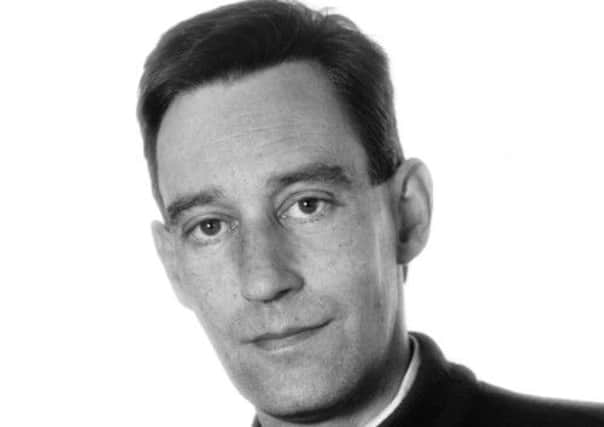Obituary: John Gifford, MBE, author and architectural historian


John Gifford came from a well-known Edinburgh family who held a special place in expanding the investment trust movement in the capital. Gifford’s grandfather was TJ Carlyle Gifford who founded Baillie Gifford & Co – the investment arm of the law firm of the same name. His father was an economist who worked in the Foreign Office and later for the United Nations in Geneva. Gifford’s mother came from a distinguished Kirriemuir family, the Lyells of Kinnordy.
His love of Scotland’s history and its buildings remained a passion throughout his life and Gifford wrote many books and contributed to learned architectural magazines on the subject. He was author or co-author of The Buildings of Scotland volumes on Dumfries and Galloway, Edinburgh, Fife, Highland and Islands, and Stirling and Central Scotland. Gifford took immense care to paint an intriguing and fascinating account of each subject and critics responded enthusiastically with such tributes as “full of interest… impeccably researched”.
Advertisement
Hide AdAdvertisement
Hide AdThe Very Rev Canon Allan Maclean was both a personal friend and involved with Gifford in the Episcopalian Church. “Architecture, especially Scottish architecture, was John’s life,” he said.
“His knowledge was extensive and he was generous with his time and information to researchers and the young. He was much involved in ensuring the Episcopal Church preserved its buildings through Canon 35 which governs all alterations to its buildings.
“John was a modest and devout man who preserved a twinkle in the eye and was blessed with a fine sense of humour. He often said to me with a broad smile, ‘There is not a graveyard in Scotland that I have not visited.’”
John Vernon Gifford was born in London as his father was then working in the Foreign Office. The family often returned to Scotland and Gifford holidayed in Angus and on his grandfather’s farm at Pogbie, Humbie, East Lothian.
He read Modern History at New College, Oxford and carried out extensive research on Victorian restorations of English cathedrals. Gifford spent four years as an Inspector of Historic Buildings in the Scottish Office, during which time he published a book on East Lothian villages.
He was then offered the post of principal researcher and historian for The Buildings of Scotland series which had been founded by Sir Nikolaus Pevsner and Colin McWilliam.
It was the latter who fired Gifford’s interest in historical architecture and engaged him to continue the acclaimed project they had completed in England. Gifford’s first book, on Edinburgh, set a new standard for academic study. The Buildings of Scotland, for which Gifford was largely responsible, gained a considerable following and became an invaluable, and reliable, guide for tourists and historians.
Gifford also published a biography of William Adam, Scotland’s leading early 18th-century architect, and wrote with much insight about Adam’s House of Dun in Angus.
Advertisement
Hide AdAdvertisement
Hide AdHe was a major contributor to the online Dictionary of Scottish Architects. Gifford had the knack of introducing to locals, visitors and specialists information on buildings not always accessible and provided a valuable historical background to the area.
It will, undoubtedly, be the scholastic The Buildings of Scotland series for which Gifford will be remembered. In the Perth and Kinross book, for example, Gifford traces the history of the area from the early Roman settlements to the country houses of the 19th century and the imposing civic and industrial monuments.
In his book on Dundee he writes with deep understanding of the city’s ecclesiastical, commercial and industrial buildings and of the city’s importance as a Victorian port and manufacturing centre.
Dr Aonghus Mackechnie of Historic Scotland confirmed the decisive contribution made by Gifford to the broadening the interest in Scottish architectural history.
He said: “The Buildings of Scotland series was of a very high academic standard and John was meticulous in his research – unveiling many unknown facts. He had the ability and historical perspective to place Scottish architecture in a national context. John valued people on their own merit and was wonderfully open-minded both personally and intellectually.”
Gifford, who had latterly worshipped daily at St Mary’s Cathedral in the capital, served for many years as a member of the Edinburgh Diocesan Synod and of the General Synod of the Scottish Episcopal Church. He served on the committee of the Scottish Georgian Society (now Architectural Heritage Society of Scotland) and was a member of the Buildings Committee of the National Trust for Scotland. He was appointed MBE in 2005 and was particularly honoured to be elected an Honorary Fellow of the Royal Incorporation of Architects in Scotland in 2012.
Gifford had lived in Edinburgh for more than 40 years was taken ill while visiting his brother on the Kinnordy Estate. He is survived by David Bassett.